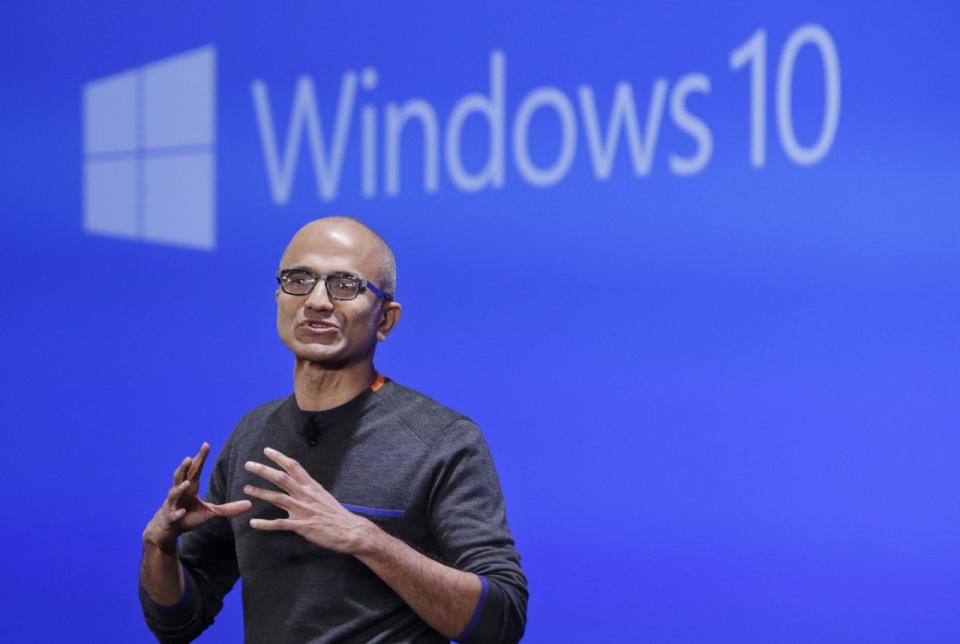Windows 10 isn't perfect — but it's time to let go of Windows 7

Windows 10 just turned one year old. Did you send it a card? No, me neither.
This edition of Microsoft’s operating system — newly improved with the “Anniversary Update” shipped Tuesday — has done a great deal to stand apart from its ancestors in that first year. But one thing it hasn’t done is displace them on as many PCs as Microsoft (MSFT) would like.
That’s a little disappointing. But it’s hard to blame Windows 10 for it.
The persistence of predecessors
Let’s start with Microsoft’s “Windows and Store trends” page for developers, which shows a steady increase in Win 10’s installed base. Still, as of April (the most recent month listed), Windows 10 was only on 40% of PCs in the US. Meanwhile, Windows 7 ran on 44% of the computers in the US as of April.
Worldwide, the numbers were even more lopsided: Win 10 at 30%, Win 7 at 51%.
That’s Windows 7 as in the release that shipped in October of 2009 and was appreciated most for not being Windows Vista. Microsoft replaced it almost four years ago with Windows 8 — although that release quickly reached a Vista level of unpopularity after its October 2012 release and now only runs on 15% of US PCs, according to those Microsoft stats.
But those figures only list versions from Win 7 onward. To get a fuller sense, turn to third-party sites that count browser and operating-system releases in use on the Web, and which record usage of older Windows releases as well as Macs.
StatCounter’s figures for July show that Windows 7 was the most popular operating system in the US, at 31.98%. Windows 10 was in second place, at 27.73%, and all versions of OS X ran on 17.52% of computers. Win 8 and its less-crummy upgrade Win 8.1 combined for 10.34% and Windows XP maintained its beyond-the-grave grip on 2.97% of computers.
The worldwide figures there and at NetMarketShare show Win 10 doing worse — only on 23.53% of computers in StatCounter’s numbers, 21.13% in NetMarketShare’s. The latter also has XP on a full 10.34% of machines worldwide, which should be a source of planetary shame at this point.
You could say that getting a new operating system on even a quarter of computers in a year ranks as a major achievement, considering that PC sales have been slumping overall and Windows users often wait until their next computer purchase to change operating systems.
But Windows 10 was also a free upgrade until July 29, when it began costing at least $120. Meanwhile, you can still buy new computers with Windows 7 pre-installed — the selection isn’t as good as what you could find in 2012, but you’ll still find a decent range at sites like HP (HPQ) and Best Buy (BBY).
Windows 10 is a good operating system
It’s a little goofy that people aren’t using Windows 10 — imagine Apple (AAPL) users buying new MacBooks or iMacs shipping with the 2009-vintage Snow Leopard release. (Mac shoppers are paying for some distinctly old hardware these days, but that’s a separate issue.) Windows 7 is not that good, and Windows 10 is not that bad.
I’ll go a step farther and say that Windows 10 is not just pretty good but ranks as one of Microsoft’s best operating-system releases in a long time.
It welcomes touchscreen input, something Apple shows zero interest in adding to its desktop operating system. And unlike Windows 8 — which also shipped before many laptops had added touch-sensitive screens — Windows 10’s traditional desktop interface doesn’t look like it landed from a different planet.
Windows 10 not only has a Start menu where Win 8 had none, but it’s also one that benefits from a desperately needed rewrite that allowed it to function as both a list of programs and a dashboard of recent activity in your regular apps.
Windows 10 had a virtual assistant, Cortana, from day one; Mac users won’t get Siri until macOS Sierra ships in the next few months.
The Edge browser in Windows 10 is no Internet Explorer. It’s secure and fast, and unlike Apple’s Safari it doesn’t gobble every last bit of memory if left alone for too long. This week’s Anniversary Update added the ability to run extensions, fixing the one major shortfall in this browser.
The Anniversary Update also adds thoughtful features like the ability to mirror the notifications of an Android phone. And it expands Microsoft’s Hello facial-recognition system — you can log into not just your computer but individual sites by letting the computer recognize your face.
Not all is well in the state of Windows 10. The e-mail client has the kind of limited feature set you might expect in a phone app, and the calendar still doesn’t support time zones (how is that even possible?). Also, the Start menu can get cluttered with suggestions for apps to install — now that Win 10 is a paid upgrade, basic parts of the interface shouldn’t double as an advertising platform.
There’s a Second Anniversary Update already in progress that will fix all those issues … right, Microsoft? Please?
More from Rob Pegoraro:
T-Mobile now has America’s second-best availability, new ranking says
If you value privacy, WikiLeaks stopped being your friend years ago
Here’s how to make sure no one else can read your Facebook Messages
Twitter won’t solve its harassment problem by banning one jerk
Email Rob at [email protected]; follow him on Twitter at @robpegoraro.
